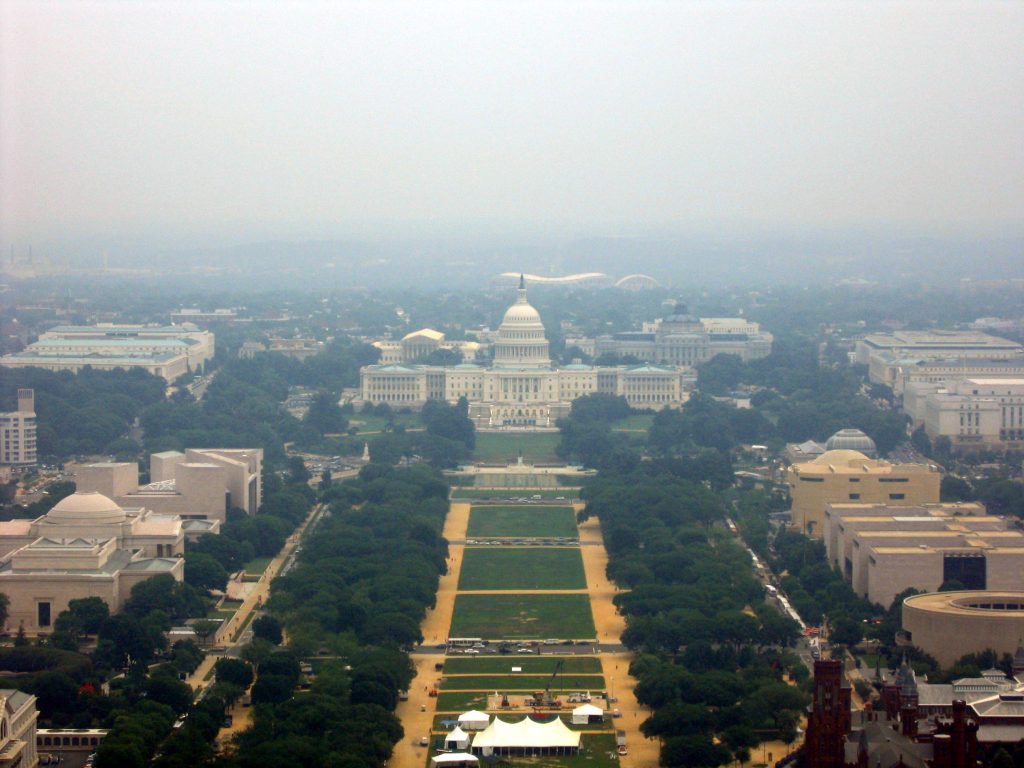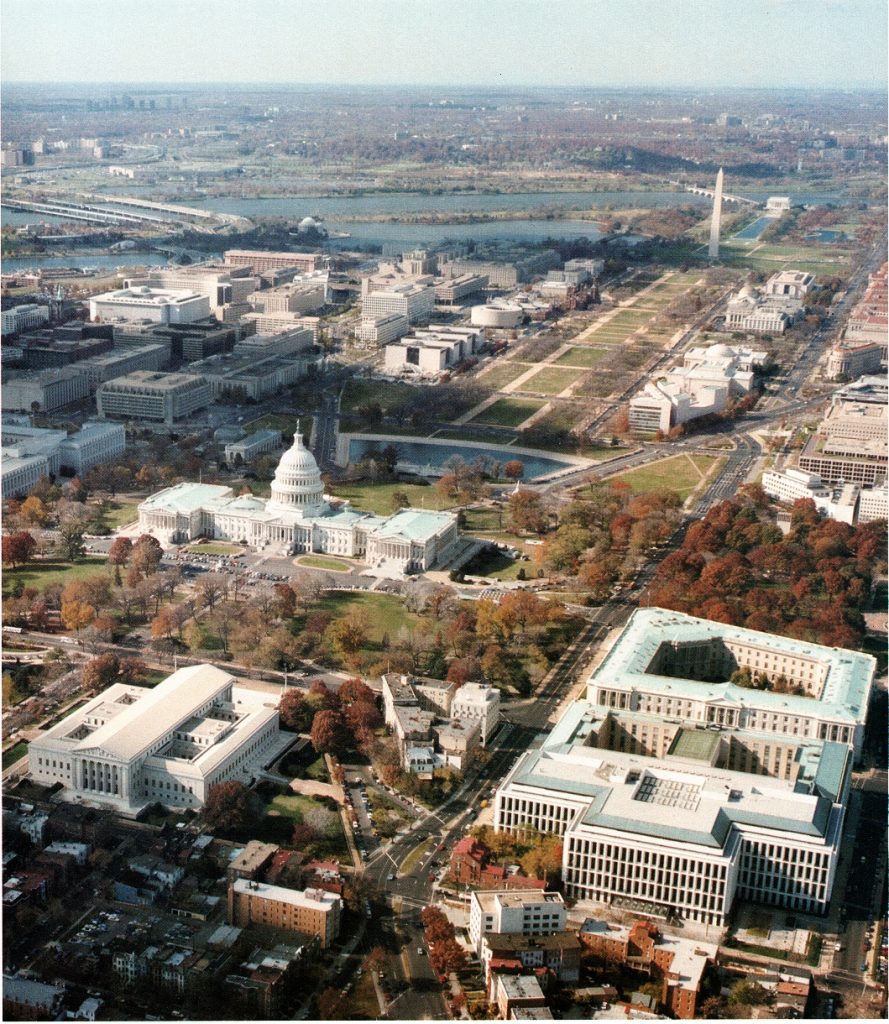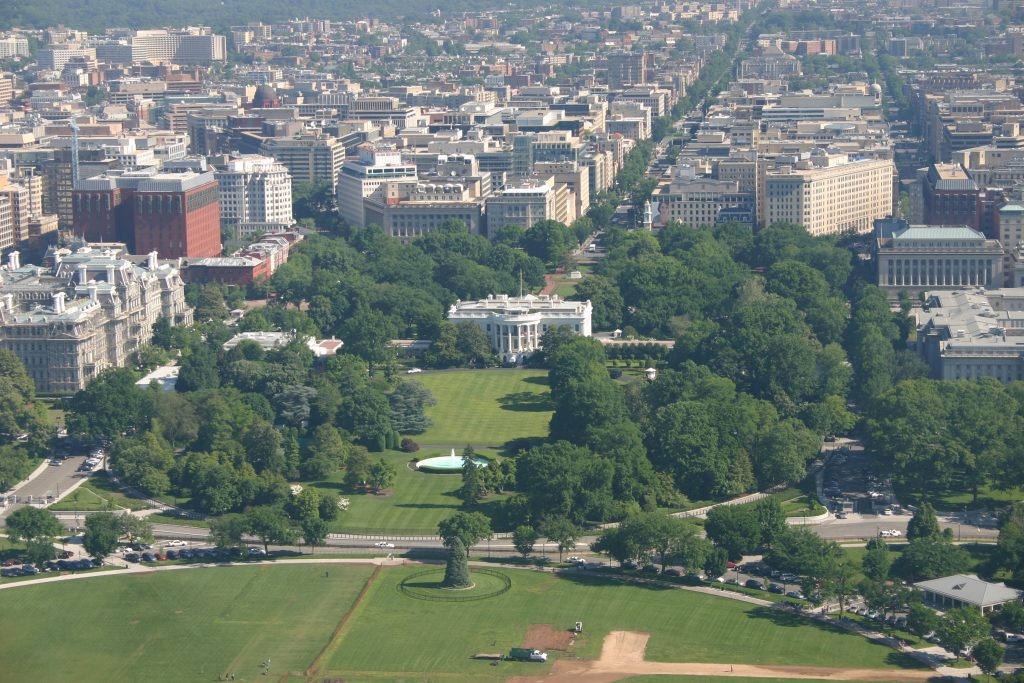Washington D.C., L'ENFANT, Enlightenment, WASHINGTON D.C., 1792, AD

Image 1: plan of Washington D.C.
The premise for Washington, DC. (images 1 and 2) was to create a new federal capital from the sparsely settled countryside of Maryland and Virginia. The larger area of Washington, DC. is essentially a diamond that is carved out of those two states with the Potomac River cutting diagonally through the district. Washington D.C. was proclaimed a federal district in 1790 as the new capital of the United States.
The designer of Washington D.C. was Pierre L’Enfant, a French artist and architect. He had previous connections to the US as a major in the Corps of Engineers when he volunteered for the American Revolution. L’Enfant had an ideal set of experiences in understanding landforms which qualified him to be the designer of this new town. Also interesting is, instead of designing a plan reinforcing the priority of a monarch, L’Enfant designed Washington D.C. relating to the democratic ideals on which the nation was founded. When L’Enfant was young, he visited Versailles, and the experience certainly made an impression on him as there are clear relationships to Versailles.

Image 2: view of Washington D.C. from Washington Monument towards Capitol building
Washington D.C. is organized through two major systems, figural voided radial axes and an underlying grid. The radial axes create hierarchy in the plan as they connect major architectural monuments such as Pennsylvania Avenue connecting the White House and Capitol Building (images 3 and 4). The radial axes spawning from the Capitol and White house are duplicated (with names of states) at nearly parallel lines forming a larger connective network of radial axes. The precedent for this relates to the successful Baroque Roman Replanning project from 1585. One major comparison is instead of defining the religious buildings as hierarchy in Rome, Washington D.C. reinforces the political buildings as most important. Typography also reinforces this hierarchy just as in Rome where the religious buildings were ideally placed at the top of the many hills in the city. In Washington D.C., L’Enfant located the Capitol Building on the tallest point within the new city called Jenkins Hill. Not only is the Capitol designed as an exceedingly tall, monumental building, it’s even further exaggerated by being placed on the highest ground of the city.
The other half of the organization of the city often overlooked is the grid. The grid functions in competition to the hierarchy established by the radial axes. Including the grid was an important design premise relating to the newly founded goals of the democracy. The grid includes a DATUM and equal underlying organization of the city. The grid streets are named with letters and numbers. It is a combination of these two systems that makes the urban planning of Washington D.C. richly complex. The two systems are competing for an order that becomes complicated when the two systems are not congruent. Anybody who has driven around the city has likely experienced the slight shift from the radial axes to grid system in the city causing disorientation.
The city plan also includes the central landscape feature of the Mall featuring civic buildings, premier museums and monuments. Washington D.C. focuses a central figural voided landscape connecting major monuments and buildings. These line the figural void of the Mall to the natural void of the Potomac River. The plan for the Mall took decades to realize the vision of L’Enfant. For years, the Smithsonian Castle was one of the first and only buildings along the Mall. Today it is known as a grand civic space hosting important gatherings and political movements throughout the year. Many key moments in American history have been featured in the landscape with the image of political buildings and monuments in the background. At the opposite end of the mall from the Capitol is the Lincoln Memorial resembling the PARTHENON. In the middle of the Mall is the OBELISK of the Washington Monument. Worth consideration is why there are clear references to Egyptian, Greek and Roman symbols and precedents featured in the US capitol city. The imagery is loaded with symbolism and relates to many of the founding fathers being Freemasons.
Present in many American political buildings is iconography, such as PEDIMENTS reminiscent of earlier Greek and Roman civilizations. This is to relate back to other great civilizations and/or democracies while the newly founded American democracy was becoming established.

Image 3: aerial view of Washington D.C. showing Capital building, Mall, Washington Monument and Potomac River

Image 4: view of Washington D.C. showing White House and radial axis proceeding north
Media Attributions
- Plan Drawing of Washington DC is licensed under a Public Domain license
- Aerial View of the National Mall in Washington DC © HarshLight is licensed under a CC BY (Attribution) license
- Aerial View of Washington DC Mall © Architect of the Capital is licensed under a Public Domain license
- Aerial View of the White House in Washington DC © YoTuT is licensed under a CC BY (Attribution) license
a system which acts as a means of organization due to its regularity and continuity
a tall, thin, tapered stone, constructed of one solid piece of stone (no occupiable space within the structure)
triangular cap to a temple originally, but also many other building types
